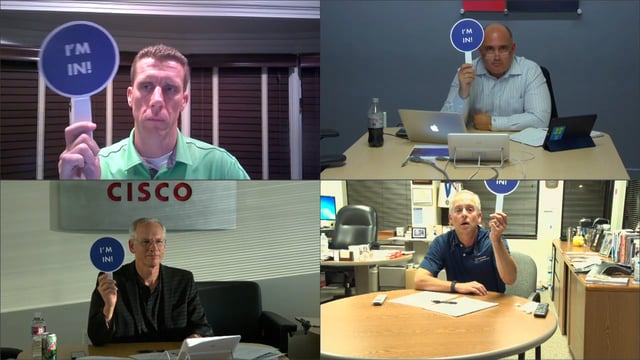
Hyperinnovation at Cisco
Originally posted on The Horizons Tracker.
It’s widely acknowledged that much of the innovation we encounter in life derives from ‘the edge’, where two worlds collide. In academic terms, it’s the rationale behind much of recombinant innovation, whereby ideas from one domain are applied in novel ways in another.
Indeed, such an approach lies behind the famous saying from William Gibson, that the future already exists, but that it’s unevenly distributed.
This has led to a rise in open innovation, as companies seek to rub shoulders with those who they may not ordinarily encounter. Whilst the success of these early initiatives is often mixed, there is clear potential for staving off disruption by working closely with those potential disruptors.
Innovating at speed
Assuming you have such an ecosystem in place however, a key next step is to develop ways that you can work effectively with your partners to innovate at speed.
It’s something that Cisco are attempting to get better at via their Cisco Hyperinnovation Living Labs (CHILL). The aim is to expedite the commercialization of ideas by getting stakeholders together who can do collectively what they cannot achieve individually.
Each lab consists of around five companies, with each participant selected for their mutually beneficial qualities. IP arrangements are established at the outset, with teams then free to bestow their intellectual curiosity to the group.
Each lab follows a four stage process:
- Defining the focus, and especially the areas of opportunity, after which potential partners are assessed and selected.
- Define the problem the customer faces in a specific area, and the root cause of the problem.
- Work with participants to develop prototypes, with the process typically completed over a rapid, two-day hackathon style event.
- The final step is to then follow up on this initial prototype, with executives given the opportunity to commit to scaling up successful projects, with a business plan and plan of action for the next six months.
Whilst the project is still in an early stage of its development, 75% of the prototypes developed via CHILL have been funded. There is also significant value derived from the deep relationships developed with the innovation partners.
Innovation labs, such as CHILL, are increasingly common, and indeed a recent study examined a collection of innovation labs to see if common features exist between them.
Common characteristics of an innovation lab
The paper identifies a number of traits that seem common among innovation labs:
- Imposed innovation topic – so rather than allowing innovations to emerge naturally, innovation labs tend to have a clear topic that they wish to address upon their formation
- Large scale challenges – the labs tend to focus on large and challenging topics rather than smaller or more iterative ones
- Revolution rather than evolution – this is typified in the desire to revolutionize the field they’re exploring. The labs aren’t really interested in gradual change
- Autonomous setup – the labs are generally standalone entities. Whilst many might have sponsorship from various organizations, they seldom sit within any
- Diverse participation – the broad aim of each lab is to engage a wide range of participants to encourage heterogeneous participation
- Collaborative – the labs have a strong collaborative ethos to them in order to uncover the best solutions possible
- Long-term perspective – the labs certainly aren’t short-term in their outlook, which is just as well given the ambitious plans many have
- A diverse set of tools – the labs generally employ as many approaches and methodologies as is required to get results. Whether that’s prototyping, design thinking, crowdsourcing or RCTs, the labs are open to using whatever it takes
- Going beyond ideation – the purpose of the labs is to create solutions. Therefore, they’re not there just to create ideas, but to be active throughout the innovation process
The paper goes on to suggest that whilst the open aspect of the labs in the ideation phase resembles that of traditional open innovation, what happens after that is generally somewhat richer and more complex, and is arguably more akin to co-creation than traditional open innovation. The aim is very much to open up the entire innovation process rather than just the front-end aspect of it.
So in that sense CHILL is very much part of a wider Zeitgeist that is attempting to innovate in a different way. Check out the video above to learn more about CHILL.
Article source: Hyperinnovation at Cisco.





